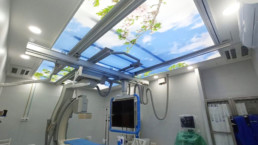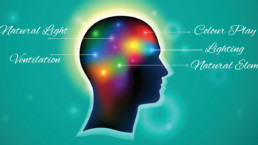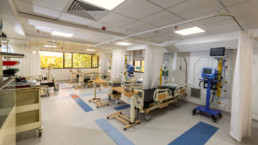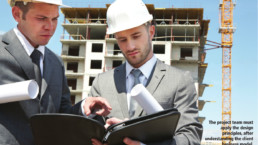With the medical industry growing in leaps and bounds, care providers are looking for ways to engage with the patients visiting healthcare centres. They understand the need to provide them with a positive experience as soon as they walk through their doors.
We have seen the role that healthcare design has to play when we re-imagine what healthcare spaces should look and feel like in the “New Normal, ”post-Covid. From waiting rooms and lobbies to inpatient rooms and ICUs, healthcare design trends have a common goal – How do we improve the experience for both patients and healthcare providers while ensuring safety and sterility?
Design can make all the difference when it comes to improving patient care. From a patient’s point of view, the right ambience can bring comfort and keep anxiety at bay. A healthcare space designed to address the unique challenges that a hospital or clinic faces can dramatically improve workflows and operational efficiency for doctors, employees and caregivers.
If you are thinking about setting up a new healthcare centre or improving an established one, here are five healthcare design trends to keep in mind!
1. Neuroaesthetics
While neuroaesthetics is a broad and complex science, it effectively explores how our perceptions, thoughts and emotions are dependent on and shaped by the interactions with the environment around us. Hence, the application of neuroaesthetics in health space design can be used to create responsive spaces that promote healing.
We create healing spaces by paying attention to:
- Natural light to brighten and enlargen spaces
- Ventilation for fresh air
- Natural elements like planters, trees, landscapes or flowers
- Colour play by using the right colours in the right places to enhance the sensory appeal of the space
- Lighting in various temperatures, colours, intensities, shapes and sizes highlights the utility and ambience of the healthcare space.
“Keeping the end-user as our focal point, we harness the elements of neuroaesthetics in diverse blends, helping our design achieve its maximum potential. The true reflection of this success is when the doctors and caregivers at the facility thank us while sharing examples of patients experiencing calmness instantly as they step into the facility and responding to treatment procedures in a remarkably improved way.
The credit for the same, nonetheless, rightfully goes to neuroaesthetics, the architect in the doctor’s coat!”
Sneha Rananaware Associate Architect, Shree Designs
Our blog linked here has all the details to find out more about how we apply neuroaesthetics in our design!
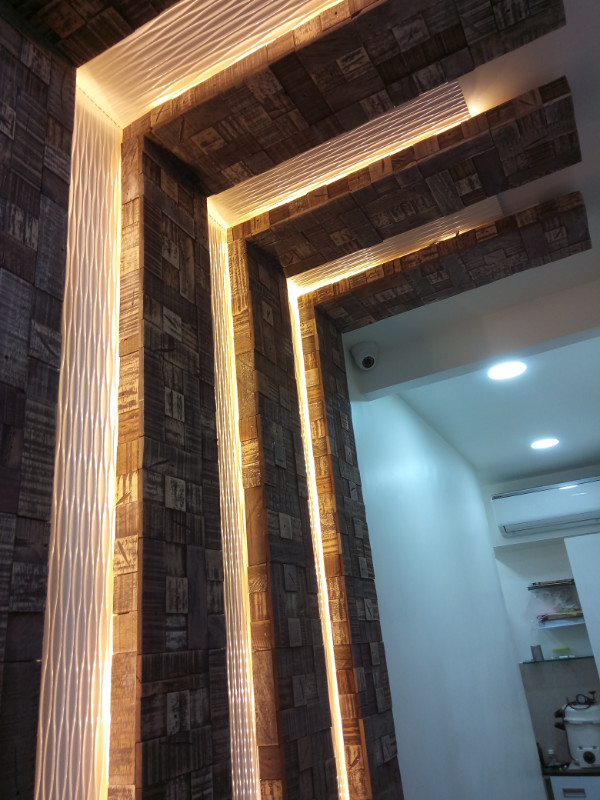

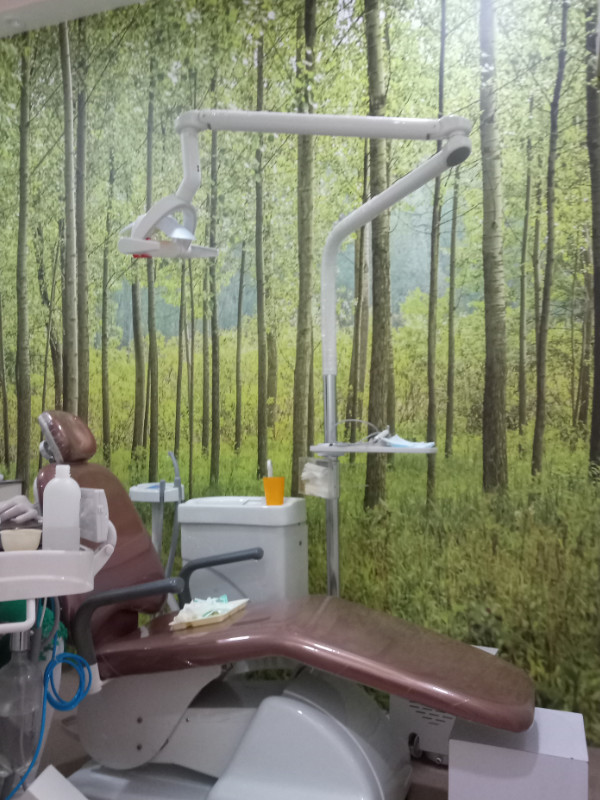
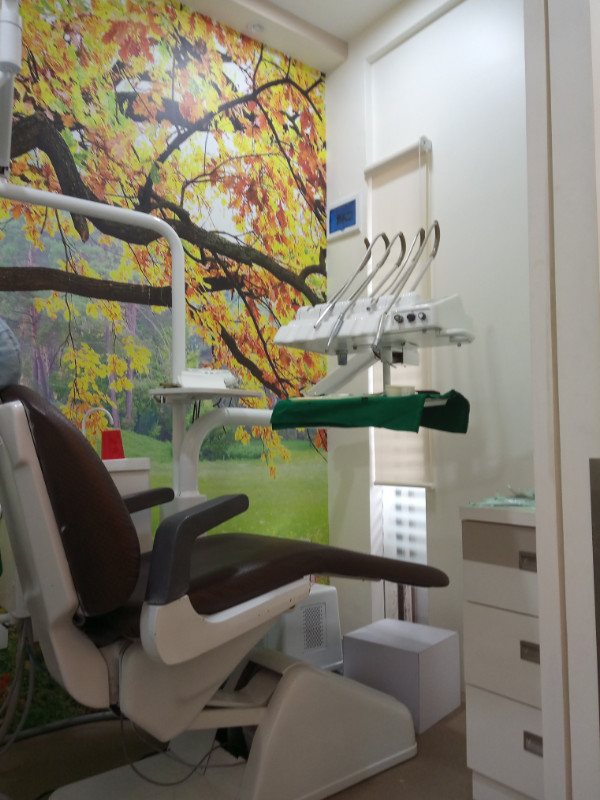
A project that showcases the use of neuroaesthetics in healthcare office design is one we executed for Dr Radhesh Rao’s Soft Touch Dental Clinic in Bhandup. We opted for modern interiors and colour schemes that gave a spacious feel to the clinic. Moreover, as the site has no windows, we tried to bring in the essence of nature by customising nature-themed wallpapers, which helped add vastness to the interiors.
2. Repurposing space
The word “retrofit”, as we are aware, suggests fitting in or on to an existing structure, while substituting new or modernised parts or equipment for older ones. This applies to hospital and healthcare facility design since they are always constantly evolving in terms of technology, methodology and care delivery systems. Retrofitting is an apt way to keep in step with the transformation.
What is the incentive behind retrofitting? We can build a new environment that provides an enhanced patient-centric experience while also complying with regulations or industry standards in terms of safety and sterility.
In our blog post linked here, we dive into the various factors to keep in mind when retrofitting in healthcare design
We recently redesigned our client’s existing Catheterization lab (Cathlab) in Upasani Super Specialty Hospital Mumbai to adhere to the enhanced infection control and safety norms, while upgrading the medical equipment. Check out the details of the project linked here.
3. Eco-friendly designs
In a typical healthcare centre, lighting, water heating, and space heating account for more than 65% of the energy consumption. The aim of redesigning sustainable healthcare facilities is to reduce the carbon burden in hospitals while ensuring that the occupants – staff and patients – are kept safe. Hospitals of the future may reduce their impact on the environment while cutting down operational costs and increasing energy efficiency by installing solar panels, rainwater harvesting or automated sensors for lights and temperature control.
4. Colour Palettes
Colours speak louder than words! Vibrant hues have the ability to lift our moods, while dull shades can just as easily dampen our moods. Traditionally, white walls are often associated with a clinical appearance and institutional settings. However, with a renewed focus on both physical and mental healing, adding colour can make healthcare environments seem less intimidating. It has become a popular way to boost appeal without making major structural changes.
Colour can add a fun element to the otherwise stark and (for some) scary hospital experience. Wall to wall landscapes, backdrops, murals, and mood lighting are some ways to brighten up dreary hospital spaces and keep the patient engaged.
We have a detailed breakdown of the different colour schemes that work well in healthcare facilities linked in our previous blog post.
5. Infection Control
We know that design impacts disease control. The last couple of years has been eye-opening for the healthcare industry. It brought the importance of effective infection control in healthcare facilities to the forefront. While doctors and hospital administrators work tirelessly to treat patients, healthcare architects ensure that they provide the proper support by creating innovative designs for hospital environments that improve infection prevention and control at the health facilities.
Hospital architecture and future hospital design are now looking at minimalistic interiors with fewer flat surfaces to decrease the transmission of infections. Anti-microbial finishes also help with easy cleaning, while resilient materials protect against wear and tear.
Handwashing stations, screening areas, robust air and ventilation systems, as well as thoughtfully designed isolation rooms, have become the norm.
We have discussed the changes that hospital and healthcare facility design has undergone in order to abide by post COVID regulations, while maintaining social distancing and finding ways to keep patients and employees safe, with sterile surroundings.
Our experience designing and building the Catheterization Lab at Symbiosis Speciality Hospital, Dadar, Mumbai, brought infection control practices to the forefront. The cathlab consisting of the latest state of the art FD 10 PHILIPS MACHINE, was uniquely designed by maintaining all the sterile conditions, using only healthcare grade vinyl for the flooring and the walls. Read about the entire project, linked here.

At Shree Designs, our team of experienced healthcare architects, continue to watch market trends that inspire design ideas for hospitals of the future, with intuitive products, inspiring spaces and experiences that are inclusive and safe for both patients and providers!
Visit us to find out more about our process and feel free to get in touch with us for a consultation.
Related Posts
The Architectural Design of Hospital Facilities
Shree Designs designed and executed many efficient and safe healthcare setups in the middle of the…
Neuroaesthetics in Architecture
Neuroaesthetics is an evolving scientific arena which explores how our perceptions, thoughts and…
Patient-Centred Care and Community Healthcare
Patient-centred care focuses on individual patients’ healthcare needs and desired health related…
The changing face of healthcare design
After completing a decade in designing healthcare projects, Kshititi Nagarkar, principal architect,…
Retrofitting For Healthcare Facilities
The word “retrofit” as we are aware suggests fitting in or on to an existing structure OR to…
Kshititi Nagarkar, Architect for The Healthcare Sector
“Decisions on the Infrastructure in the Healthcare Sector are based on costs rather than their…

